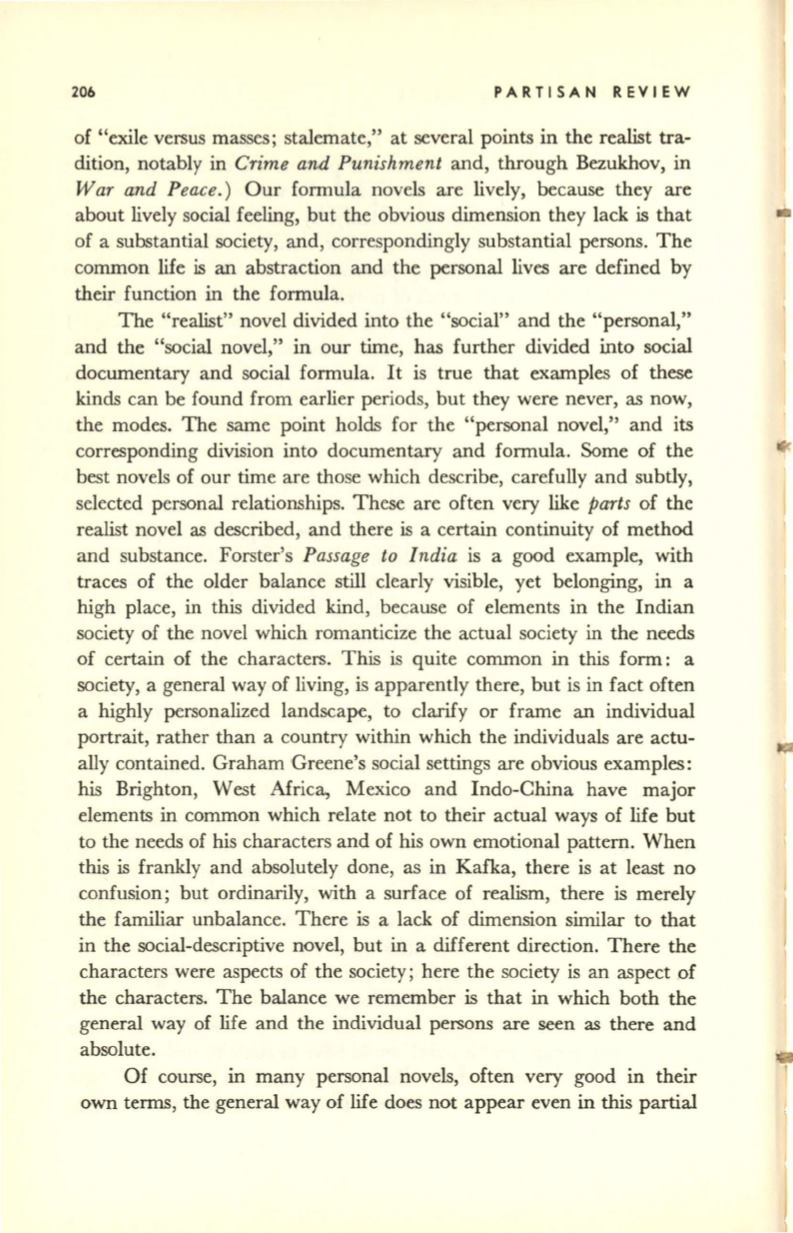
206
PARTISAN REVIEW
of "exile versus masses; stalemate," at several points in the realist tra–
dition, notably in
Crime and Punishment
and, through Bezukhov, in
War and Peace.)
Our formula novels are lively, because they are
about lively social feeling, but the obvious dimension they lack
is
that
of a substantial society, and, correspondingly substantial persons. The
common life
is
an abstraction and the personal lives are defined by
their function in the formula.
The "realist" novel divided into the "social" and the "personal,"
and the "social novel," in our time, has further divided into social
documentary and social formula. It is true that examples of these
kinds can be found from earlier periods, but they were never, as now,
the modes. The same point holds for the "personal novel," and its
corresponding division into documentary and formula. Some of the
best novels of our time are those which describe, carefully and subtly,
selected personal relationships. These are often very like
parts
of the
realist novel as described, and there
is
a certain continuity of method
and substance. Forster's
Passage to India
is a good example, with
traces of the older balance still clearly visible, yet belonging, in a
high place, in this divided kind, because of elements in the Indian
society of the novel which romanticize the actual society in the needs
of certain of the characters. This is quite common in this form: a
society, a general way of living, is apparently there, but is in fact often
a highly personalized landscape, to clarify or frame an individual
portrait, rather than a country within which the individuals are actu–
ally contained. Graham Greene's social settings are obvious examples:
his
Brighton, West Africa, Mexico and Indo-China have major
elements in common which relate not to their actual ways of life but
to the needs of his characters and of his own emotional pattern. When
this
is
frankly and absolutely done, as in Kafka, there is at least no
confusion; but ordinarily, with a surface of realism, there
is
merely
the familiar unbalance. There
is
a lack of dimension similar to that
in the social-descriptive novel, but in a different direction. There the
characters were aspects of the society; here the society is an aspect of
the characters. The balance we remember
is
that in which both the
general way of life and the individual persons are seen as there and
absolute.
Of course, in many personal novels, often very good in their
own terms, the general way of life does not appear even in this partial


